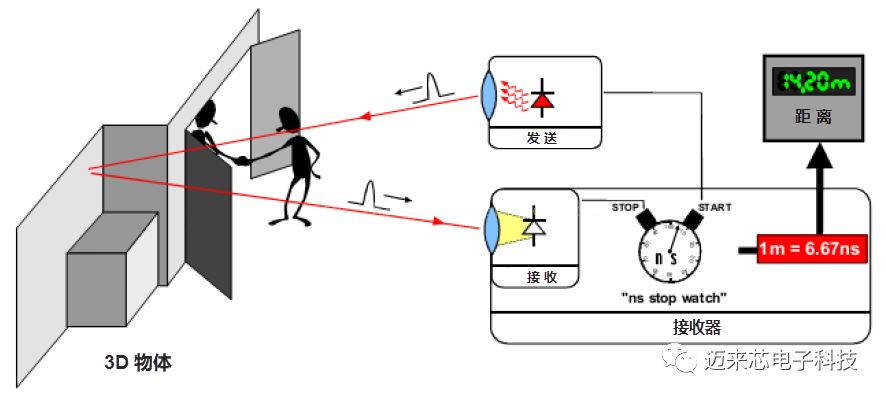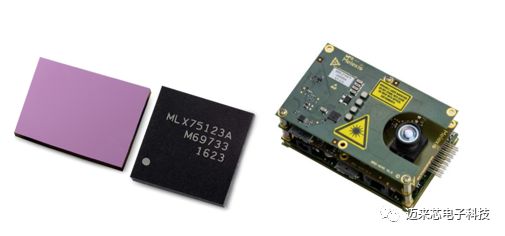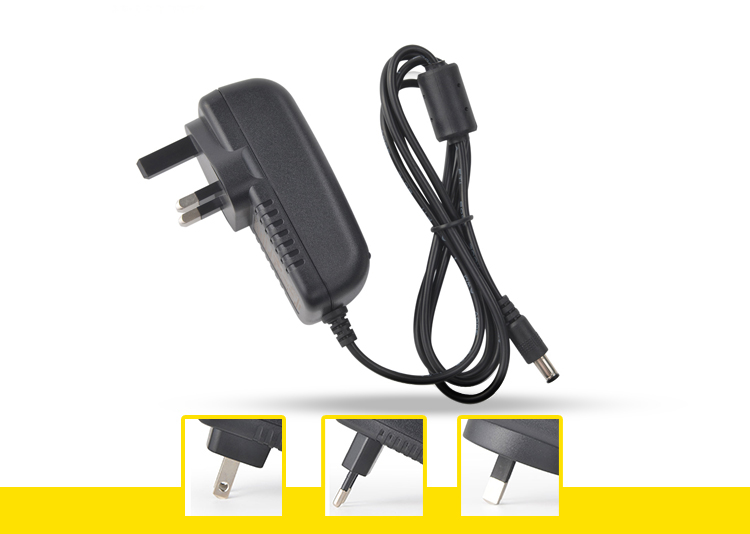The "humanoid" robot is equipped with a precise vision system, which can have "eyes and golden eyes" comparable to Monkey King. It can recognize objects in complex environments more clearly and accurately, and can perceive the shape of objects even in dark environments at night. Of course, in addition to the visual system, an excellent "humanoid" robot also needs to be equipped with a good auditory system and movement and perception capabilities to make it as flexible and smart as a human being and help us solve practical problems.
Most robots now use a binocular vision system, which uses two cameras to form a depth-of-field camera to judge the distance of the object seen from the robot and its shape, etc.

Binocular imaging uses dual cameras to shoot objects, and then calculates the distance of the object through the principle of triangulation. It can measure the depth information of the target object to achieve high-precision, high-resolution measurement results. However, this system has low efficiency, high computing power requirements, and is easily interfered by environmental factors, especially in a dim environment with insufficient light. The recognition rate is poor. In addition, the video images collected by the binocular imaging camera need to be processed by some upper-level software artificial intelligence algorithms. This requires very high requirements for the central processing unit CPU and image processor GPU in the system hardware design, and the development difficulty is relatively large. . Therefore, binocular imaging faces many problems in actual use.
By combining the TOF 3D Camera and the Thermal camera FIR array, we create a more efficient robot vision system. The time-of-flight 3D camera provides a sensor chip and a supporting interface chip, which can realize a reliable 3D imaging solution, while minimizing post-processing costs, and has a variety of flexible and adjustable functions to cope with different resolution, distance and field of view requirements . The far-infrared thermal sensor array integrates a series of thermal-sensing pixel arrays in a single chip. The temperature detection in the two-dimensional area can be realized through the pixel thermal array. It provides a cost-effective and efficient way for more expensive high-end thermal imaging cameras. Alternative.
Time-of-flight (TOF) 3D camera sensor

The full English name of TOF is Time of Flight, which refers to the time of flight. After the light of the modulated light source of the camera is emitted, it is reflected back by the object, and there will be a time difference. According to this time difference, through a specific algorithm, the distance of the object from the camera can be estimated.

As shown in the figure, the TOF 3D camera greatly improves the image depth information, can analyze the front stereo image, and accurately recognize the distance between objects, so as to achieve high-precision robot avoiding obstacles, route planning and other functions in complex environments.
The TOF 3D Camera sensor can build a 3D depth camera. The camera greatly improves the image depth information, can analyze the front stereo image, and accurately identify the distance between objects. A robot equipped with a TOF 3D camera can perform three-dimensional modeling of the front image, so as to achieve high-precision robot avoidance, route planning and other functions in a complex environment. In addition, this 3D depth camera can also realize multiple functions such as face recognition, gesture recognition, human skeleton recognition, 3D measurement, environment perception, 3D map reconstruction, etc., and can be widely used in TVs, mobile phones, robots, drones, and VR. /AR, smart home security, car driving assistance and other fields.
Melexis provides a complete set of chipset solutions centered on the MLX75023 3D camera sensor, and can provide a complete time-of-flight solution through the combination with the MLX75123 supporting interface chip.

The MLX75023 is a one-third-foot chip that integrates a time-of-flight (TOF) camera sensor with a quarter video graphics array (QVGA, 320 x 240 pixels) resolution. Its high dynamic range DepthSense™TOF pixel technology can provide a background light suppression capability of up to 120 klux. It has an operating temperature range of -40°C to +105°C and is packaged in a chip-scale glass ball array (BGA) package that can provide many integrated functions. The MLX75123 chip combines outstanding performance and flexibility, can minimize the number of components and reduce the size of the 3D TOF camera, thereby simplifying the design and realizing an ultra-compact 3D camera.
MLX75023 and MLX75123 chips have extremely small package size, so the circuit board area they require is very small. The excellent working stability of the chipset makes it very suitable for the design of automobiles, surveillance and intelligent buildings, as well as industrial applications including machine vision, robotics and factory automation.
In addition, we have also designed and developed a series of innovative products to build sensor and drive controller solutions suitable for robot applications, including Hall current sensor MLX91210 for detecting current; fan driver IC MLX90287 for cooling CPU; a variety of models are suitable for Latch/Switch, linear and 3D Hall position sensors for motor position and angle detection, etc.


About this item
- 9V Switching wall charger
- 110V input voltage / 9VDC 1A/2A/3A... output voltage
- For use with Arduino Uno, Mega and MB102 Power supply boards
- Connector size: 5.5 x 2.1mm/5.5*2.5mm...
- Center or Tip is positive, sleeve is negative
9v wall charger,AC Power Supply Wall Plug,Wall Adapter Power Supply,9V Power Adapter,ac 50/60hz power adapter,Wall Adapter Power Supply - 9VDC,100-240v converter switching power adapter
Shenzhen Waweis Technology Co., Ltd. , https://www.waweis.com
